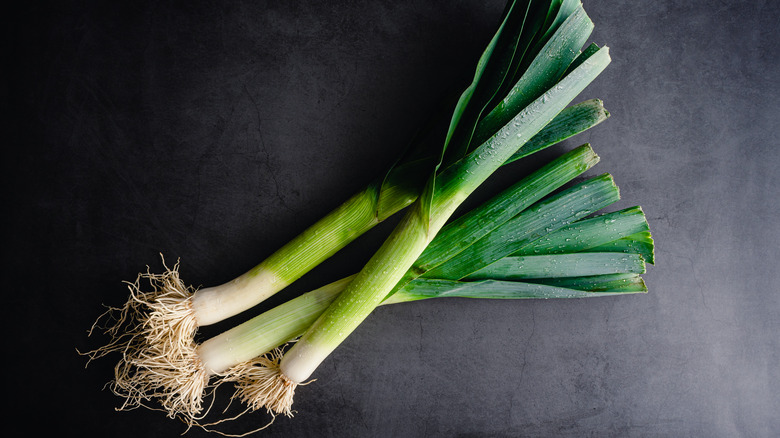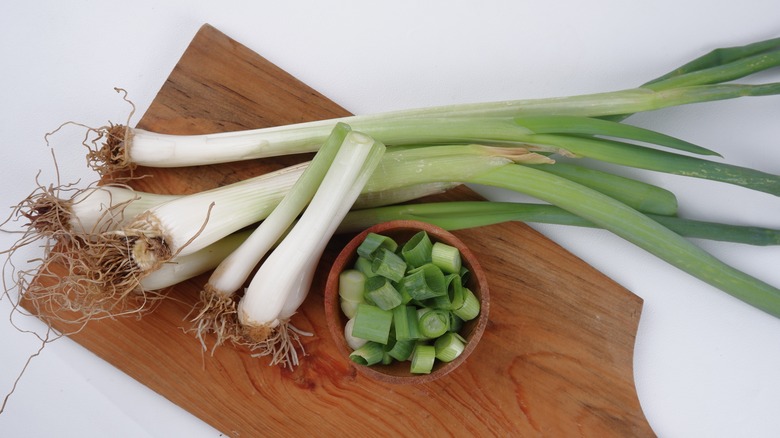How To Clean Leeks, Root To Stem
Like fellow allium family members onions, garlic, shallots, and chives, leeks are a versatile cooking ingredient, adding great flavor to virtually any dish — from soups and salads to omelets and pastas. But, since leeks are root veggies and invariably dirty, cleaning them is always a necessary part of the preparation process. Fortunately, it's not particularly arduous to clean leeks. However, the proper steps can vary slightly according to your preferred recipe.
In most cases, cleaning the vegetable will not be the initial step. The first step will actually be to remove the white fibrous hairs that grow at the root, and also remove the dark green tops, leaving just the white and light green portions of the leek, which are used in most food dishes. (Though, keep the green tops as they can be used for homemade stock or soup recipes.) Next, take a kitchen knife to the ends to cut them off, then section the rest of the leek in 4-inch portions, cutting crosswise to do so. Once this has been accomplished, these leek portions can be cut lengthwise for cleaning, or you can continue slicing them finely or into half-moon-shaped pieces, and then clean.
Once ready, take a bowl and fill it with cold water. Leeks are naturally buoyant, regardless of size, so the pieces will float while any dirt or sand from the soil where they were grown should sink to the bottom of the bowl. Once the leek bits are clean, place them in a colander to strain out any remaining water so they're ready for cooking.
The alternative cleaning method for whole leeks
Some recipes may call for whole leeks. This is a somewhat deceptive description as most of the green tops need to still be cut off and set aside. But, the idea here is to keep as much of the white and light green portions of the leek as possible to cook whole; these are the tenderest, best-tasting portions of the veggie. To proceed this way, cut off root fibers closely and cleanly to preserve more of the white section of leek. Any tough outer leaves can also be removed at this stage.
When all of this has been done, the whole leek will need to be cut lengthwise, but not in its entirety. Start the cut about an inch from the base of the white side and cut cleanly through. This will present a number of layers, with dirt likely visible in many of them. At this point, you'll rinse the vegetable with cold water to remove the debris, but obviously, you want to do so in a way that the dirt doesn't wash back into the rest of the leek. You can hold the white base closest to the faucet and use your hands to help remove any persistent dirt or sand. No soaking is necessary for this whole leek method.
No matter which way you go about it, once the leeks have been cleaned, they are ready to use, whether in a buttered leek quiche or a recipe for rosemary potatoes with leeks and chorizo.


